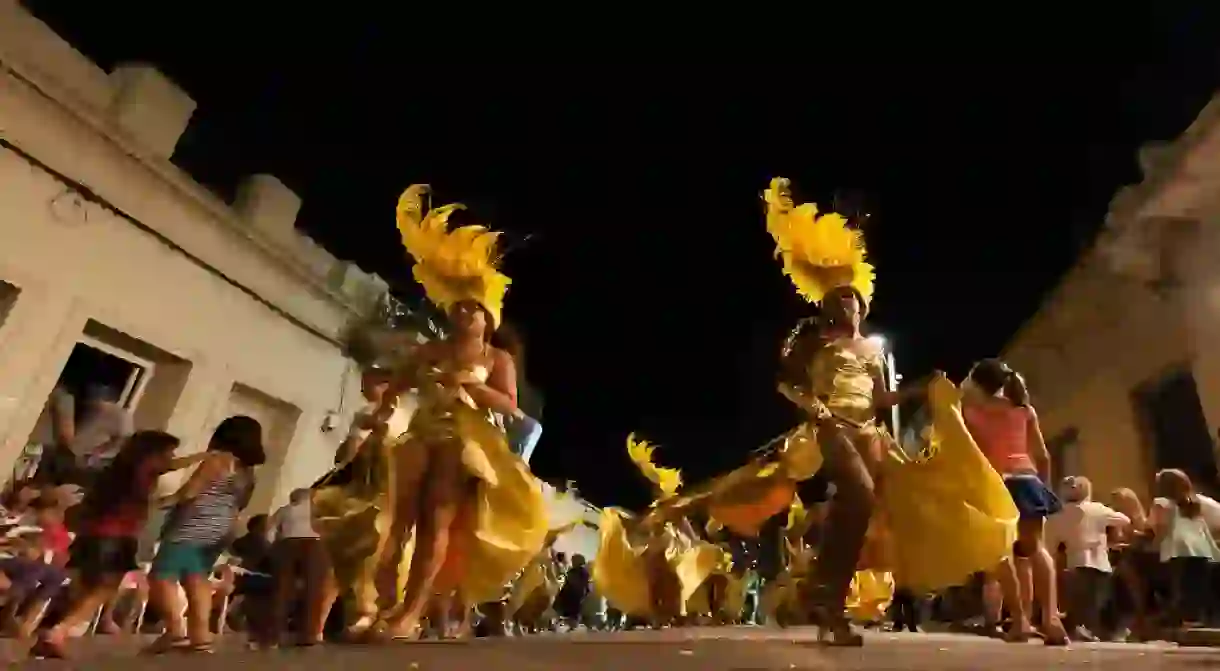A Brief History of the Uruguayan Candombe

The heart and soul of Uruguayan culture, today candombe is one of the country’s most well-known exports. From humble origins, it has grown into a drumming and dance spectacular, that’s celebrated every January with a month-long fiesta in the streets of Montevideo. We take a look at the history of this enchanting, affecting performance.
Candombe is a rhythm – a style of drumming and dance that first surfaced among young people of African slave descent in the late 18th century. Then, around a quarter of the country’s population had arrived on the shores of the nation from all corners of Africa. It was a lively community, with an intricate array of ethnicities and cultures – dance halls, schools and clandestine meetings sprang up all over Uruguay as people flocked to share candombe with each other.

With strong Bantu roots, the first candombe drummers called their instruments tangó. The Uruguayan authorities caught wind of this “defiant”, “immoral” candombe during the fight for independence from Argentina and Brazil and sought to stamp it out. The governor of Montevideo pushed drummers and dancers further underground, until slavery was abolished in 1842 and these secret dance meetings spilled out onto the streets. From that moment on, candombe became a defining feature of Uruguay’s national identity.

To Uruguayans, candombe means so much more than just a performance: it’s a gathering of like-minded people and a fusion of distinct traditions. Every January, residents and tourists come out to Barrio Sur and Palermo to join in Las Llamadas. The unmistakable candombe rhythm is created by three drums: tambor piano, tambor chico and tambor repique. Telling the story of the profound impact African cultures have had on Uruguay and its people, this arresting rhythm is today accompanied by a complex, energetic dance and bird-of-paradise-like costumes in tablados, or nightly shows. Powerful, emotional and invigorating, it’s truly a sight and sound to behold.
Carnival 2017: from 8.30pm, 19th January for 40 nights. Various locations in Barrio Sur and Palermo.













